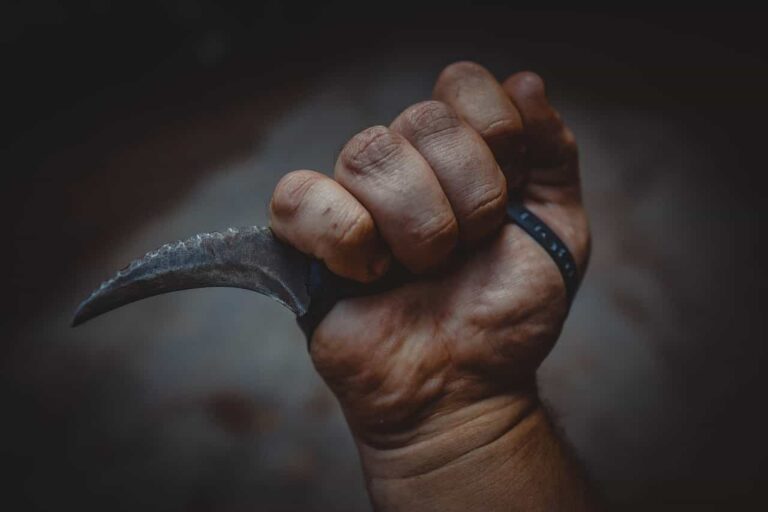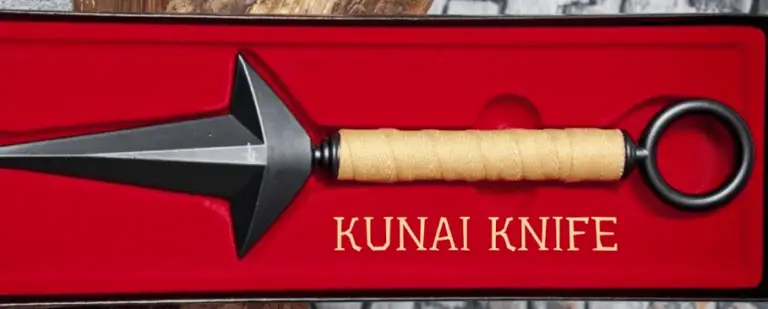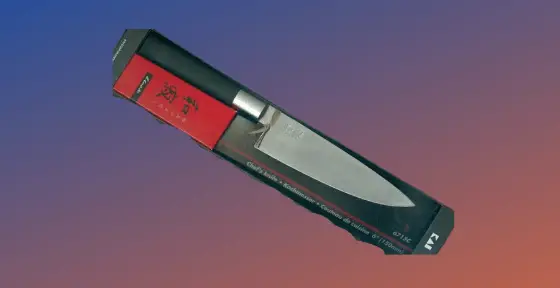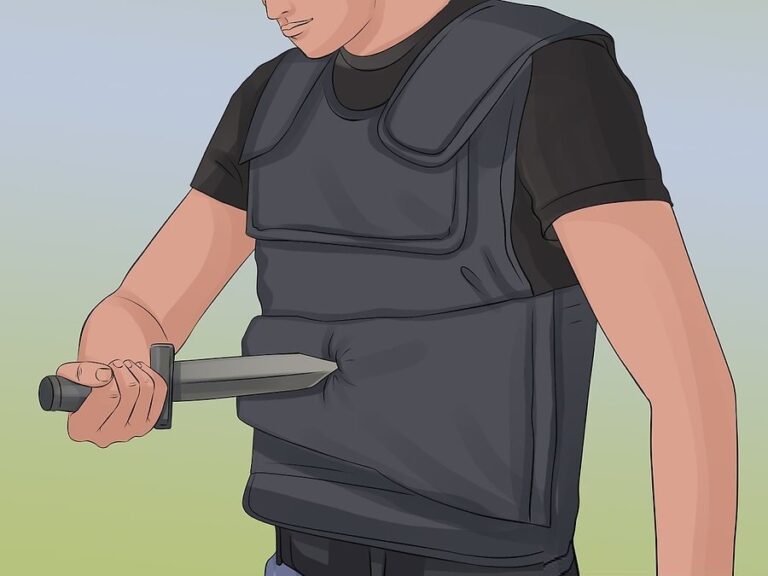Of the various kinds of kitchen knives out there, the butcher’s knife does not get a lot of representation.
Agreed, you won’t find this in every kitchen. Sometimes, I believe that it is not only for the mere size that is deemed not appropriate for the standard kitchen but for the fact that many cooks and chefs might not know what they are missing out on by not having one of these knives in their arsenal.
So, today, we have only one question to explore: what, exactly, are the uses of a butcher knife, and why should you get one?
What is a butcher’s knife?

You have a lot of knives that can cut through meat in your kitchen. That, however, does not mean that they should all be used for cutting meat.
A butcher’s knife is a high-carbon stainless steel kitchen tool, designed with a full tang and lengthy blade that glides through meat seamlessly.
The high carbon steel content in the blade holds the edge sharpness for longer while also keeping the knife sturdy for heavy meat cutting operations. With a long blade, the butcher’s knife can handle varying measurements of meat parts, helping the cook to process large amounts of meat in considerably little time.
Speaking of the design, the butcher knife is characterized by blades that are:
- Large
- Thick
- Long (6 to 12 inches)
- Slightly curved at the front.
Overall, the butcher’s knife is a high-quality kitchen tool specially designed to make your life easier if you deal with meat in any way.
Do you need a butcher’s knife?
Long story short, yes.
If you deal with meat in any form and you want to keep the integrity of the meat even after cutting it into various parts, you need to get a butcher’s knife.
Butcher’s knives are so designed that they can catch onto the meat right. Used in the right way, they transform your meat cooking sessions from mediocre to superb, just by the way they are built and designed to be used.
What are the various uses of a butcher’s knife?
And we get to the meat of the post, all pun intended.
When next you see a butcher’s knife in the store, know that it can do the following for you:
#1 Cut Meat
This is the most obvious one, so I’ll start from here.
The standard butcher knife blade is strong enough to cut through meat and bones too. Most home cooks might not need a butcher knife ever since the meat they get from the store has been de-boned. However, you might sometimes prefer to get your meat with the bones in it – and either leave it in while cooking or process it yourself.
Likewise, hunters who catch medium size to large games will need a knife capable of handling all the bones and flesh that they have to tear through. Here, the butcher knife provides the convenience of not being as huge as a meat cleaver, so it’s easier to carry around with you.
#2 Cut Pizza
It could be argued that serrated knives are best here, but the extra length of a butcher knife does come in handy.
Now, you can cut the pizza into pieces without worrying about the heat getting to your hand. I know I like that convenience.
#3 Cutting Vegetables
Butcher knives are one of the best kinds of blades to cut vegetables with.
Due to the blade sharpness and quality, they don’t get ‘caught’ by the vegetables and won’t make a mess. They are also much handier than a paring knife in this case, with the latter being too small to be of good use sometimes.
When handling large vegetables that can pose some resistance (say lettuce, melons, squash, and cabbages, for example), you will also notice how well a butcher knife compares against other kinds of knives.
#4 Get Level Cuts
Cutting meats into smaller parts can be dicey when you are dealing with large amounts of meat. Use the wrong knife and you would make a mess of the whole meat.
That is not to say that the meat you cut with the smaller knives/non-specialized knives won’t taste great. Far from it. But you already know that good food for the stomach also has to be good for the eyes too. In other words, presentation matters.
The length of a butcher knife allows you to handle that large body of meat with better, even cuts. You get to run a single slice that takes the entire length and breadth of the meat, rather than having to pause at sections to align your knife again.
Besides the beauty of the final meal, imagine how much time and effort that alone saves you.
#5 Subtle Operations
Most knives dedicated to cutting meat (like the meat cleaver, for example) are too heavy or big to be used for anything else.
The butcher knife, on the other hand, is a master at not being a specialist at one thing – but enjoying a range of features that makes it applicable to other operations too.
So, while the knife will appropriately section your meat and get through the bones with relative ease too, you can also use it to fillet your fish. I cannot say the same for the meat cleaver.
#6 Fat Trimming
One meat processing operation that we often forget about till we have to do it is fat trimming.
We all think that we can just go in there every time, get the perfect meat portions and slice them up. When the fats come up, though, are you always left reaching for your paring knife and laboring away at trimming?
A butcher knife makes that process even easier for you.
The blade curvature is such that allows you to gently scrape off the fat from the meat without damaging the meat itself. Perhaps what I like the most here is that you don’t have to be an advanced knife user to trim fats effectively, lending further credence to why I would use a butcher knife here.
Who should not get a butcher knife?
For all the good things that I have said about butcher knives, it is not for everyone.
There are a lot of different knives out there and you can sometimes feel the need to own them all. That is not true for knives like the meat cleaver, an advanced chef knife, or a butcher knife.
So, if you fall into any of the categories below, you might not need one of these:
- You get your meat highly processed from the grocery store/ meat market
- You don’t have to remove bones from your meat, or you don’t care about doing that
- You don’t hunt animals by yourself
- You already have a lot of specialty knives for different stuff, including processing meat.
However, you can still get a quality butcher knife if you’d like a single, sharp, durable knife that does more than just cut meats and can easily handle everything you do in the kitchen. That way, you don’t always have to switch knives to complete different tasks
What are the best butcher knives for the money?

I will leave you to make that decision, ultimately. What I will do, though, is guide you by hand to how I choose the best knives – and how that works for butcher’s knives too.
Go with a Good Brand
I cannot say this enough.
The first thing to do is establish which brand you’re buying from – or the kinds of brands that you’ll buy from.
Here, only go with reputable brands with enough skin in the game. That way, you know that they have been making these knives for so long and they know what they are doing.
Some of the brands that I trust when it comes to butcher knives are (all on Amazon):
There are more of these amazing brands out there, but those are the ones I would trust with my eyes closed.
Know your Budget
You don’t have to pay too much for a good meat processing knife, and you should not go cheap either.
The right balance for most good butcher knives is $75 – $100. If you have the budget for it, I would advise investing up to $150 in these knives.
Considering the high carbon steel build, the fact that they will last longer, and how many kitchen operations they will handle at the same time, that investment is well worth it.
Check the Build
I have mentioned this up there, but I’ll talk about it here again.
The build of your butcher knife is very important to how well it works for you. So, make sure the knife has:
- A full tang – to handle the weight of all that meat work
- Long blade – for even cuts. The length of the blade is up to you, but should ideally be between 6 – 12 inches
- Premium metal – high carbon steel is favored here.
- Quality materials – if you have gone with reputable manufacturers as I suggested above, everything from the handle to the blade will be of premium quality.
Wrapping Up
I hope you now see how the uses of an average butcher knife transcend just cutting meat. Even when it is used for cutting meat alone, you can easily see how it fares better than other kitchen knives you use for different purposes.
If you’d be getting one, the buying guide up there should help you to make the best choice, and easily so.
Do you have a butcher’s knife of your own? Looking to get one soon? I’d love to hear from you in the comments.







